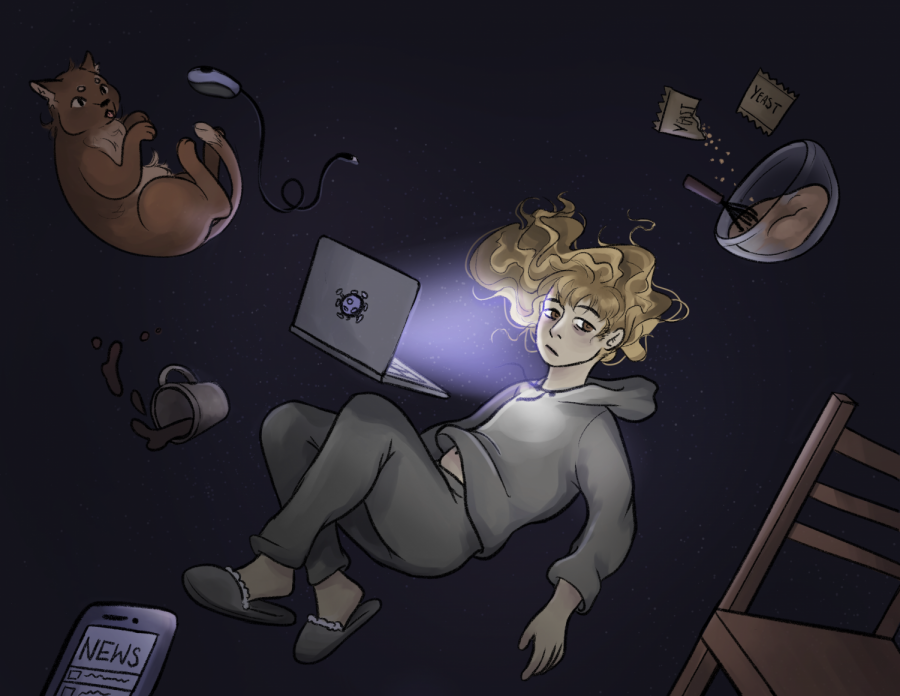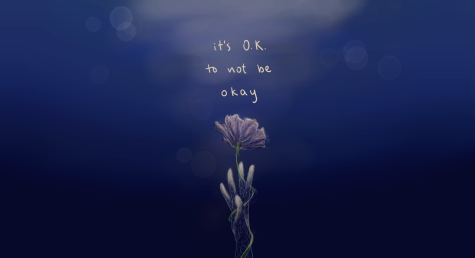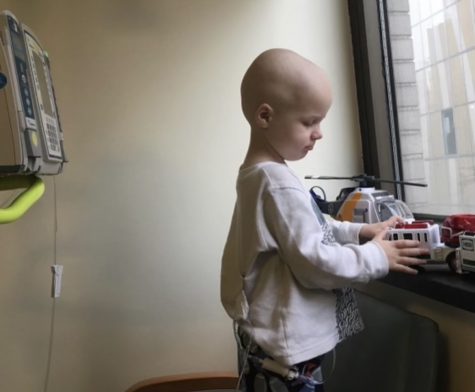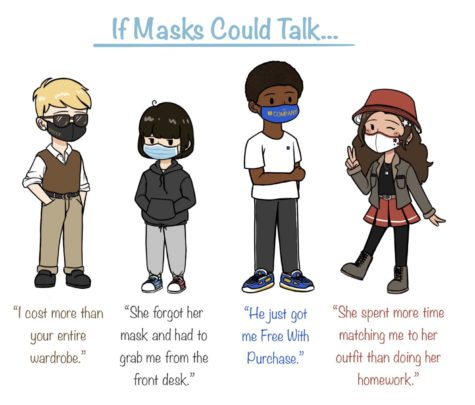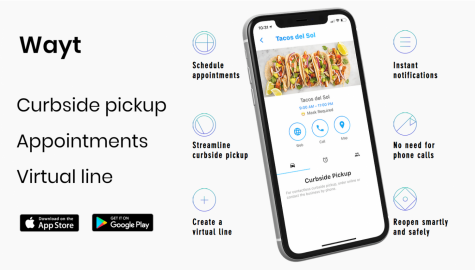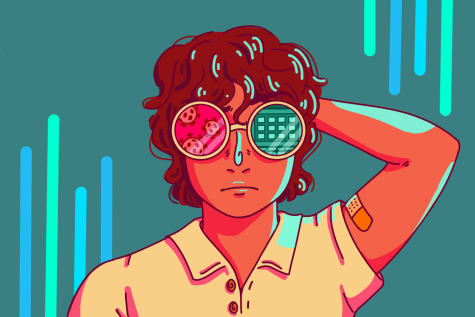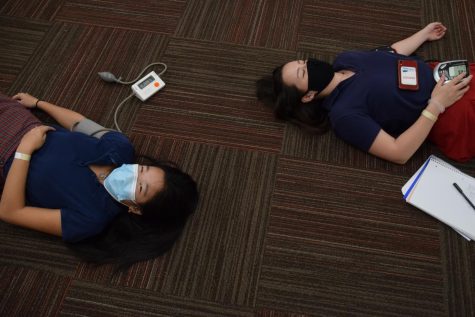COVID state of mind: mental health in quarantine
Quarantine measures and limited social interaction has left people around the world struggling with mental health.
June 3, 2020
When St. John’s School closed due to the COVID-19 pandemic, Head Prefect Melody Trautner found herself depleted of support systems and daily routines, leading to a decline in her mental health.
Trautner has anxiety, specifically around the idea of completing assignments and being productive. Usually, she creates routines that build habits and visits specific workplaces in order to overcome difficult thoughts. However, when stay-at-home orders were put into place, Trautner lost her normal coping mechanisms.
“In quarantine, I have zero structure,” Trautner said. “I shut down for close to a week, where I was in this paralysis and wasn’t making any progress.”
Holding leadership positions in Student Affairs Council and Students Against Stigma, two clubs that place emphasis on community building within the student body, has left Trautner feeling pressured to increase her involvement for the sake of his peers.
Trautner’s experience with mental health during isolation due to COVID-19 is fairly common.
For a lot of people, more time with family isn’t always a good thing. — Eleanor Cannon
Global disasters, including pandemics, that require social isolation can lead to increased feelings of stress, anxiety and grief, according to the Centers for Disease Control and Prevention.
These difficult emotions combined with a loss of support systems, from friendships to daily routines, can result in a significant decline in mental health and diminish one’s ability to cope with mental illness.
According to Upper School Counselor Ashley Le Grange, the structure of quarantine has profound ramifications on core factors that stabilize mental health, including autonomy, competency and connection.
The American Psychological Association reports that social isolation carries a number of health risks, including poor sleep, depressive symptoms and impaired executive function.
“You have trouble focusing, remembering information, following directions,” Le Grange said. “Of course these are things that students need.”
The lack of routine may prove particularly difficult for those with disorders such as anxiety and obsessive-compulsive disorder. As Le Grange says, “it’s almost as if time has gone away,” and many are unable to adhere to their usual routines.
“Fear of the uncertainty plays into all of this,” Stark said. “It’s hard for people to live with uncertainty and just be comfortable with what is.”
Through virtual contact with students and faculty members, Director of Clinical Services Tesa Stark has found that remote learning only emphasizes that “connection is such an important part of being a human being.”
While it is much harder to express emotions through a screen, excessive electronic time can also lead to increased irritability, attention deficits and fatigue, according to Stark.
With classes and meetings taking place on virtual platforms, Le Grange has found that “Zoom fatigue” is a genuine and rampant problem among students.
“A lot of frustration is exerted into detecting emotions,” Le Grange said. “We don’t have that privilege of real life human interaction. That’s why some people are so tired at the end of Zoom calls.”
Another dissonant aspect of online learning versus the conventional classroom setting entails the chaotic user interface. Some challenges students face include choosing whether to focus on the teacher or their classmates during the call, the distracting array of faces, virtual backgrounds and looking at themselves so up close.
“There’s just a lot going on in a virtual classroom that we are not as focused on in a regular classroom,” Le Grange said. “It can be hard because someone might be doing something offline and a student may interpret a facial expression as personal when it’s not.”
Women Helping Empower Each Other sponsor Eleanor Cannon affirms that quarantine and online learning has, in many cases, exacerbated pre-existing stresses. After teaching multiple history classes and attending meetings on Zoom, Cannon finds that afternoon naps have been a refreshing addition to her routine.
“Communicating with people this way is tiring,” Cannon said. “When people have trouble sleeping and adjusting to a new way of connecting, it creates a perfect storm.”
Cannon also facilitated a joint forum hosted by WHEE and the Women of Color affinity group on April 27 to raise awareness of increased domestic violence in quarantine.
“We tend to make the assumption that spending time with family is great for everyone,” Cannon said, “but for a lot of people, more time with family isn’t always a good thing.”
Through Zoom’s breakout rooms, Cannon split attendees into smaller groups to induce thoughtful discussion and reflection on research and personal victim stories presented by leaders. Thrilled by the outcome of the forum, Cannon attributed its success to the engagement and curiosity of every participant.
After the forum, WHEE and WOC leaders provided club members with resources for getting help if needed and supporting victims of domestic violence during this time.
Resources for Help
National Domestic Violence Hotline
Call 800.799.7233 Visit thehotline.org Text LOVEIS to 22522
Safe Horizon
Call 800.621.HOPE Visit safehorizon.org (shelters and resources)
Domestic Shelters
Visit domesticshelters.org (local shelters and resources)
Victim Resource Center
Call 855.4.VICTIM Visit victimconnect.org
RAINN (Rape Abuse & Incest National Network)
Call 800.656.HOPE Visit rainn.org
To Her Credit
To Her Credit provides a guide to navigate financial help when leaving an abusive relationship
St. John’s Resources
Ms. LeGrange ([email protected]) and Nurse Stark ([email protected])
To combat any harmful effects quarantine may have, Stark recommends working in breaks throughout the day to spend time outdoors, as well as getting sleep and good nutrition. She has found great benefit in volunteering at a telemedicine clinic and regularly meeting with her advisory on Zoom.
Stark places a great emphasis on being empathetic to the situations of others and finding silver linings through tough times.
“Everybody is doing the best they can given the situation,” Stark said. “Our community has adapted pretty quickly, from schools going virtual to hospitals exploring telemedicine. Once again, Houston is proving we are very strong.”
*This article was updated on May 4, 2024 to reflect a name change.



